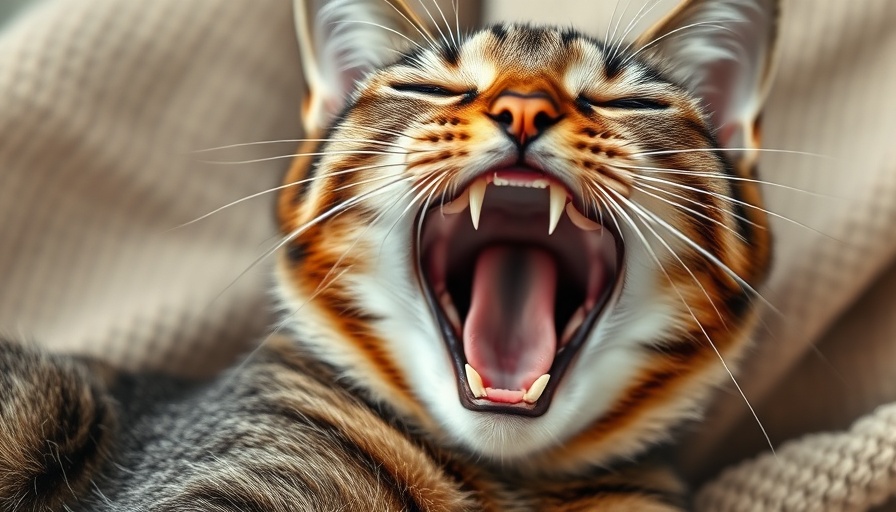
Understanding Tooth Resorption in Pets: A Critical Overview
Pet dental health might not be the hottest topic around dinner tables, but for many cat and dog owners, understanding the intricacies of oral health, particularly tooth resorption, is vital. Tooth resorption is a painful dental condition affecting up to 60% of cats and 40% of dogs by the age of six, and it’s an issue that requires attention from pet enthusiasts and healthcare professionals alike.
What Exactly Is Tooth Resorption?
Tooth resorption occurs when the body gradually breaks down and absorbs the tooth structure, starting with the enamel and progressing to the dentin and pulp. This condition can be painful and lead to complications, including oral infections. Symptoms are often subtle and can range from slight discomfort to increased drooling and reduced appetite. Recognizing these signs early can prevent further deterioration of your pet's dental health.
Types of Tooth Resorption and Their Impacts
There are different types of tooth resorption noted in both cats and dogs. In cats, classification ranges from Type 1, which preserves the periodontal ligament, to types that involve structural changes in the teeth themselves. Dogs experience various forms, including external inflammatory resorption and internal surface resorption. Knowing the type of resorption can help veterinarians determine the right treatment approach.
Signs Your Pet May Be Affected
Although tooth resorption often develops with little noticeable symptoms, certain behaviors can serve as red flags. Increased drooling, head shaking, and face rubbing are indicative of dental distress. Pet owners should remain vigilant with regular oral health checks, brushing their pets' teeth, and being aware of any changes in behavior, especially related to eating.
The Importance of Regular Veterinary Care
Diagnosing tooth resorption typically involves physical examinations and X-rays to evaluate the condition of the teeth. It’s crucial for pet owners to pursue veterinary advice at the first sign of dental pain or changes in their pet's behavior. Early diagnosis enables the management of the condition and limits the pain associated with advanced dental disease.
Conventional and Natural Treatment Options
Treatment options for tooth resorption depend on its severity. Some discussions may lead to the extraction of severely affected teeth, while less critical cases maintain stability with routine dental care. Pets with less dramatic symptoms may be monitored more closely, while others could undergo root canal treatments to preserve tooth integrity. On the natural front, maintaining oral hygiene through regular brushing, providing fresh food, and avoiding certain hard chews can help support dental health.
The Role of Nutrition in Dental Health
A sustainable diet plays a crucial role in your pet’s oral health. Offering fresh, high-quality food can bolster a pet’s immune system and, in turn, support oral wellness. Furthermore, understanding dietary deficiencies through mineral testing can enhance proactive measures in dental care.
Looking Ahead: Pet Health Awareness and Action
As pet owners, fostering an awareness of dental conditions like tooth resorption not only promotes better health for our furry companions but encourages a holistic approach towards pet care. By staying informed, seeking veterinary care, and implementing regular dental hygiene practices, pet owners can drastically improve their pets' quality of life.
Your Pet Deserves the Best
If you notice any signs of dental discomfort in your pet, don’t wait until it becomes a critical issue. Schedule a veterinary appointment to address any concerns and stay proactive about your pet's dental health. By doing so, you are investing not only in their well-being but also in many more happy years of companionship.
 Add Row
Add Row  Add
Add 


 Add Row
Add Row  Add
Add 

Write A Comment